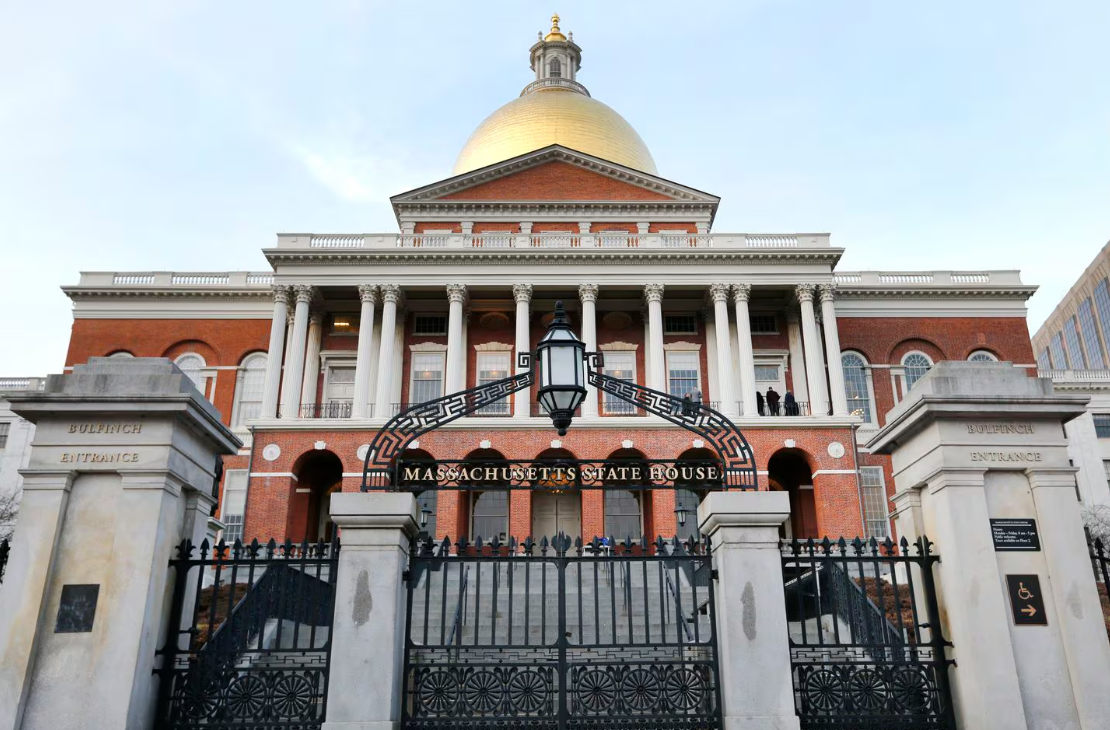马萨诸塞州众议院 65 亿美元住房法案在新的开发项目上大放异彩

【中美创新时报2024 年 6 月 7 日编译讯】(记者温友平编译)马萨诸塞州众议院周三(5日)通过了一项 65 亿美元的住房债券法案,比州长莫拉·希利(Maura Healey)雄心勃勃提出的金额高出 24 亿美元。对此,《波士顿环球报》编辑委员会发表了下述社论文章。
马萨诸塞州众议院议长罗恩·马里亚诺(Ron Mariano)本周告诉记者,在住房问题上,他承诺“要么大干一场,要么回家”。他已经大干一场了。
众议院周三通过了一项 65 亿美元的住房债券法案,比州长莫拉·希利(Maura Healey)雄心勃勃提出的金额高出 24 亿美元。
马萨诸塞州正面临住房短缺和高昂的住房成本,该州需要巨额的建筑投资。如果工人买不起房子,他们就会把自己的才能带到别处,企业也会搬迁。如果老年人不能缩小规模,有孩子的家庭就买不起房子。
在马萨诸塞大学阿默斯特分校/WCVB 于 2024 年 5 月进行的一项民意调查中,居民被问及他们希望希利和立法机构在明年解决的一个问题,最常见的答案是住房短缺和负担能力。

众议院筹款委员会主席亚伦·米歇尔维茨(Aaron Michlewitz )表示,众议院专注于将资金用于住房建设。它从希利的法案中删除了几项政策变化——一项地方选择房地产转让税、一项封存驱逐记录的条款、一项允许以简单多数票进行包容性分区的转变。
现在轮到参议院了——希利的一些政策建议可能会在那里得到更友好的欢迎。参议院住房事务主席莉迪亚·爱德华兹(Lydia Edwards )是驱逐封存的坚定支持者,她建议参议院将该法案视为“从不同角度解决住房危机”的一种方式,不仅关注生产,还关注政策。
参议院应迅速发布其版本的法案,以便就最终法案进行谈判。立法者应确保完美不会成为好的敌人。虽然可能存在值得解决的政策分歧,但如果在 7 月 31 日正式立法会议结束前无法达成一致,各机构应专注于一致意见,并将法案提交给希利州长。
立法者还应避免将该法案变成专项拨款的圣诞树,以确保从这笔资金中受益的开发项目不是强大政策制定者青睐的项目,而是那些通过各种州资金渠道和竞争性拨款程序的项目。
该立法的最大影响将仅仅来自于它将投入住房生产的大量公共资金。将有数百万美元分配给地方住房当局建设混合收入开发项目;为老年人、退伍军人和无家可归者提供补贴的出租房;有各种收入限制的补贴单位;以及大规模的混合收入住房。有资金用于修复不良房产、改造残疾人住房以及消除住房中的健康危害。扩大对 HousingWorks 计划的资助将为社区提供数亿美元,用于建设与住房相关的基础设施、支持建设和修复、解决规划和分区问题,并鼓励更密集的开发,包括以交通为导向的开发。众议院法案中的大多数授权与希利的法案相同。
一个变化是众议院将投入 20 亿美元而不是 15 亿美元来修复 43,000 套公共住房。这至关重要,因为州政府表示有 37 亿美元的工作要做——而《波士顿环球报》报道称,公共住房当局认为实际需求是这个数字的两倍。众议院还将设立一个新的 1.5 亿美元基金,提供技术援助,将商业地产转换为住宅,这将满足社区在 COVID 后不断变化的需求。
众议院法案中剩下的一个重要组成部分是希利的提议,即允许在划定的单户住宅区域内建造面积高达 900 平方英尺的附属住宅单元(即所谓的姻亲公寓)。市政当局可以对退让和短期租赁施加合理的限制,但不能要求业主入住或拥有多个停车位——这些规则经常用于限制建筑。众议院领导人估计,五年内可以建造 8,000 套单元。
该委员会还继续支持众议院放弃的房地产转让税的通过,这是波士顿和科德角地区社区推动的一项当地选择,他们希望对昂贵的房屋销售征税,并将这笔钱用于经济适用房。米歇尔维茨对“零敲碎打”的方法表示担忧,正如马里亚诺所说,这种方法将“在楠塔基特岛筹集大量资金,而在劳伦斯几乎一无所获。”诚然,这项税收不会对整个州都有帮助,但这并不是不给想要它的市政当局提供另一种工具的理由。
众议院法案的另一个重要部分,不在希利的法案中,是使用 10 亿美元扩大马萨诸塞州水资源管理局供水范围,以扩大伊普斯威奇河流域和南岸社区的供水范围。MWRA 将被指示优先考虑扩建,着眼于增加住房容量并改善水污染社区的水质。
扩大社区的供水和下水道容量是有好处的。缺乏供水和下水道可能会成为住房开发的障碍。例如,在马里亚诺代表的韦茅斯市,该市将被纳入扩建计划,市政府官员希望加入 MWRA,为前海军航空站的潜在重建项目获取水源。
从伊普斯威奇河取水的社区缺乏足够的供水,可能会受到夏季用水限制。市政水井的水质可能会出现问题,尤其是在 PFAS 污染的新监管标准下。MWRA 有潜力为更多社区提供服务。
但立法者应确保所有扩建都考虑到全州未来的用水需求。批准为这些社区的 MWRA 扩建提供资金是否会消除 MetroWest 地区(MWRA 也对此进行了研究)或 Quabbin 地区(MWRA 目前正在研究)社区扩建的可能性?任何扩建都应从全州的角度进行仔细规划,以评估环境影响,确保最需要水的社区获得水,并确保扩建以具有成本效益的方式进行。
参议院议长凯伦·斯皮尔卡(Karen Spilka),球在你手中。
题图:2019 年 1 月 2 日,位于波士顿的马萨诸塞州议会大厦。ELISE AMENDOLA/美联社
附原英文报道:
House’s $6.5 billion housing bill goes big on new development
MWRA expansion needs careful consideration.
By The Editorial BoardUpdated June 7, 2024
House Speaker Ron Mariano told reporters this week that when it comes to housing, he has committed to “go big or go home.” He has gone big.
The House on Wednesday passed a $6.5 billion housing bond bill, which is $2.4 billion — with a “B” — more than Governor Maura Healey ambitiously proposed.
Massachusetts is facing a housing shortage and stratospheric housing costs, and enormous investments in construction are what the state needs. If workers can’t afford housing, they will take their talents elsewhere, and businesses will move. If seniors can’t downsize, families with children can’t buy their homes.
In a May 2024 poll by the University of Massachusetts Amherst/WCVB, residents were asked what one issue they want Healey and the Legislature to address in the next year, and the most frequent answer was the housing shortage and affordability.
House Ways and Means Chair Aaron Michlewitz said that the House focused on putting money toward housing production. It stripped out several policy changes from Healey’s bill — a local option real estate transfer tax, a provision to seal eviction records, a shift to allow inclusionary zoning with a simple majority vote.
Now it’s the Senate’s turn — and some of Healey’s policy proposals may get a friendlier reception there. Senate Housing Chair Lydia Edwards, a strong proponent of eviction sealing, suggested the Senate will look at the bill as a way to “solve the housing crisis from different perspectives,” with a focus not only on production but also on policy.
The Senate should quickly release its version of the bill so a final bill can be negotiated. And lawmakers should make sure the perfect does not become the enemy of the good. While there may be policy disagreements worth hammering out, if agreement cannot be reached by the end of formal legislative sessions on July 31, the bodies should focus on points of agreement and get a bill to Healey.
Lawmakers should also avoid turning the bill into a Christmas tree of earmarks to ensure that development projects benefiting from this funding are not those favored by powerful policy makers but those that go through the various state funding pipelines and competitive grant processes.
The legislation’s biggest impact will come simply from the vast amount of public money it would pour into housing production. There would be millions of dollars allocated for local housing authorities building mixed-income developments; subsidized rental housing for seniors, veterans, and homeless people; subsidized units with a range of income restrictions; and large-scale mixed-income housing. There’s money to fix distressed properties, modify homes for people with disabilities, and eliminate health hazards in housing. Expanded funding for the HousingWorks program would make hundreds of millions of dollars available for communities to build housing-related infrastructure, support construction and rehabilitation, address planning and zoning, and encourage denser development, including transit-oriented development. Most authorizations in the House bill are identical to Healey’s bill.
One change is the House would put $2 billion, instead of $1.5 billion, into rehabilitating 43,000 units of public housing. This is vital because state authorities have suggested there is $3.7 billion of work to be done — and, the Globe reported, public housing authorities think the actual need is twice that. The House would also create a new $150 million fund to offer technical assistance to convert commercial properties to residential housing, which would address communities’ changing needs post-COVID.
One important component remaining in the House bill is Healey’s proposal to allow accessory dwelling units of up to 900 square feet — so-called in-law apartments — to be built by right in areas zoned for single-family homes. Municipalities could impose reasonable restrictions related to setbacks and short-term rentals but could not require owner occupancy or more than one parking space — rules frequently used to limit building. House leaders estimate 8,000 units could be created over five years.
This board also continues to support the passage of a real estate transfer tax that the House dropped, a local option pushed for by Boston and Cape Cod-area communities, which want to tax sales of expensive homes and use that money for affordable housing. Michlewitz expressed concern about a “piecemeal” approach that, as Mariano said, would “raise a ton of money on Nantucket, and next to nothing in Lawrence.” It’s true the tax won’t help the entire state, but that’s no reason not to give municipalities that want it another tool in their toolbox.
One other significant piece of the House bill, which is not in Healey’s bill, is its use of $1 billion to expand access to the Massachusetts Water Resources Authority water supply to communities in the Ipswich River Basin and South Shore. MWRA would be directed to prioritize expansions with an eye toward increasing housing capacity and improving water quality in communities with water contamination.
There is a benefit to expanding water and sewer capacity in communities. The lack of water and sewer can be a barrier to housing development. For example in Weymouth, a city represented by Mariano that would be included in the expansion, city officials want to join the MWRA to get water for the potential redevelopment of a former Naval air station.
Communities that draw from the Ipswich River lack sufficient supply and can be subject to summertime water restrictions. Municipal wells can struggle with water quality, particularly with new regulatory standards for PFAS contamination. The MWRA has potential capacity to serve additional communities.
But lawmakers should ensure that all expansions are eyed in light of the future need for water statewide. Will authorizing money for MWRA expansion in these communities eliminate the possibility of expansion for communities from the MetroWest region (which the MWRA has also studied) or in the Quabbin region, which the MWRA is currently studying? Any expansion should be carefully planned with a statewide perspective to evaluate the environmental impacts, ensure communities that most need the water get it, and make sure the expansion is done in a cost-effective way.
Senate President Karen Spilka, the ball’s in your court.

